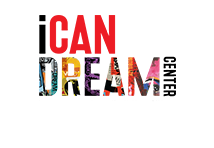
Play To Learn: Using Fun To Enhance The Learning Environment
Many students, no matter their age, may be anxious about learning or associate it with boredom. For students of all ages, fun, productive stimulation should be involved in the classroom (Lucardie, 2014).
It is easier by nature to add “fun” games to younger students’ classrooms. As children age, the less fun and fewer games there are in class and school, in general. Recess barely exists in secondary settings. Classes are packed with information, and there is hardly time for a break.
At iCan Dream Center, our team is keenly aware of how important fun, positive stimulation is for our students, as well as the critical importance of taking breaks. This is accomplished by incorporating videos, drawing activities, and even dedicated movement classes and brain breaks for our older students. While teaching subjects that may seem uninteresting if presented traditionally, we break things down and add compatible and stimulating activities that enhance the learning experience (Griss, 2020).
Collaboration is another important part of learning. We encourage students to work together and form bonds, which is helpful for school and life. When students work collaboratively, they can exchange ideas and develop even better ones together, approaching subjects in a more innovative manner than if they were working alone. The social bond students form when working together further encourages learning and builds social skills that carry beyond the classroom (Mercendetti, 2010).
At iCan Dream Center, we create an effective and efficient learning environment by offering play, multiple breaks, and stimulating activities, which are all necessary to enhance comprehension and internalization of information. The social bonding that comes from cooperating in class and with these activities further supports the positive learning environment and learning process.
Resources:
Griss, S. (2020, April 29). The Power of Movement in Teaching and Learning. Retrieved from https://www.edweek.org/tm/articles/2013/03/19/fp_griss.html
Lucardie, D. (2014, September 17). The Impact of Fun and Enjoyment on Adult’s Learning. Retrieved from https://www.sciencedirect.com/science/article/pii/S1877042814046242
Mercendetti, D. (2010). Connecting Social Skills and Cooperative Learning. Retrieved from https://digitalcommons.brockport.edu/ehd_theses/74
